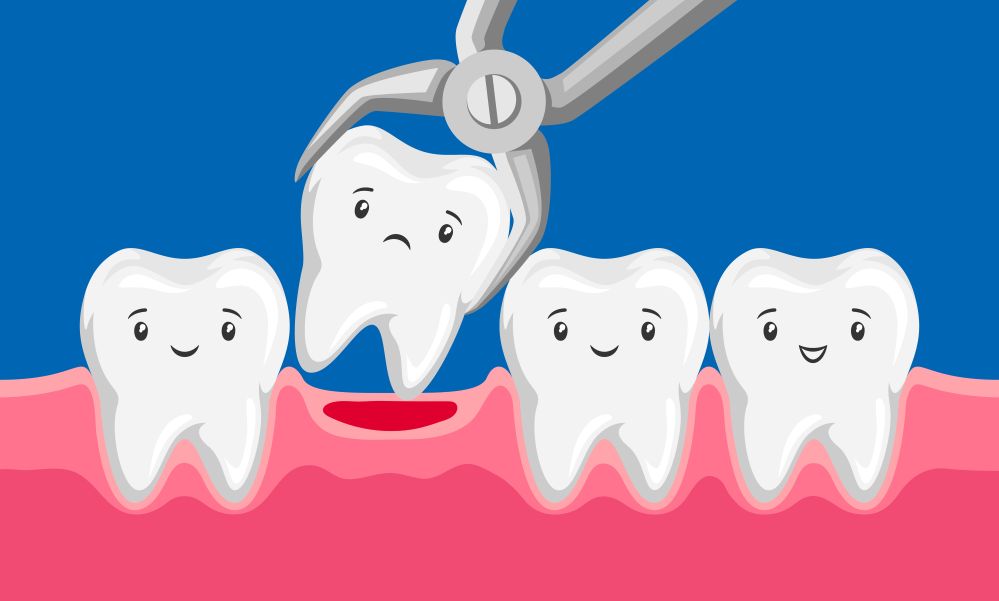
Though it’s very natural to feel nervous about needing a tooth extraction, this procedure is nothing to fear. In fact, an estimated 55,000 teeth are extracted here in the United States each day! If you’re scheduled to have a tooth removed, here’s what you can expect from the treatment, and how to make your recovery as smooth as possible.
What To Expect During Tooth Extraction
There are two types of tooth extraction: surgical and simple. While the initial steps for both treatments are similar, your dentist will need to choose one over the other depending on the location of the tooth or teeth in question. Here’s what you can expect from each procedure.
Tooth Numbing
The first step of any tooth extraction (surgical or simple) is for your dentist to numb the tooth and the surrounding area, so your procedure is completely pain-free.
Extracting the Tooth
Once the area surrounding the tooth is completely numb, your dentist will be ready to extract it from the socket. For a simple procedure, this is done by gently rocking the tooth back and forth to widen the socket and separate the tooth from the ligament. Then, using forceps, your dentist will grip the tooth and pull it out.
For surgical extractions, your dentist must make incisions in the gums to access the tooth before it can be removed. They can then use similar steps to a simple extraction to remove it from the jaw.
Closing the Socket
Once your tooth has been extracted, your dentist will close the incision. If there is any loose bone or infected gum tissue, they will remove that first. Next, they will compress the socket so it can return to its normal size. They might also need to round off any sharp bone edges to make sure your mouth heals properly.
Finally, your dentist will apply firm pressure to the extraction site using gauze to help slow the bleeding so a clot can form. If you’ve had a surgical extraction, your dentist will use stitches to close the incision site and prevent infection.
Recovering from a Tooth Extraction
Recovering from a tooth extraction could take a few weeks to complete, however you should start feeling much better within a few days. Immediately following the procedure, you should keep the gauze in your mouth for about 30 to 60 minutes to help control the bleeding. To help reduce pain and swelling, hold an ice pack to your face over the extraction site. Here are a few additional tips to help you stay comfortable:
- Continue biting down on gauze and change it as needed.
- Rest for at least the first 24 hours.
- Take prescription or over-the-counter pain relievers as directed by your dentist.
- Please don’t smoke, vape, or chew tobacco.
- Do not drink from a straw until your dentist gives you the green light.
- Eat only soft foods for two to three days following your extraction.
- Try to avoid touching the extraction site when brushing and flossing your teeth, or with your tongue or fingers.
It’s normal to experience some pain and swelling after any type of tooth extraction. However, if this pain worsens after the first three days, bleeds excessively, you develop a fever, or if there is excessive discharge from the extraction site, please contact your dentist as soon as possible.
Remember, tooth extractions are a very routine procedure. Though they may not exactly be welcome news, by following your aftercare instructions closely you can help ensure your recovery period is as brief and as comfortable as possible.
About Dr. Hooks
Dr. Gwen Hooks always knew she wanted to help people, but it wasn’t until her dentist brother encouraged her to try dentistry that she realized how great it felt to make patients smile. Dr. Hooks earned her undergraduate education at Liberty University and her Doctor of Dental Surgery degree at the Virginia Commonwealth University Dental School. She is a current and active member of the American Dental Association and Virginia Dental Association.
To schedule a tooth extraction with Dr. Hooks at Hooks Family Dentistry, please visit our website or call us today at 434-324-8241.
